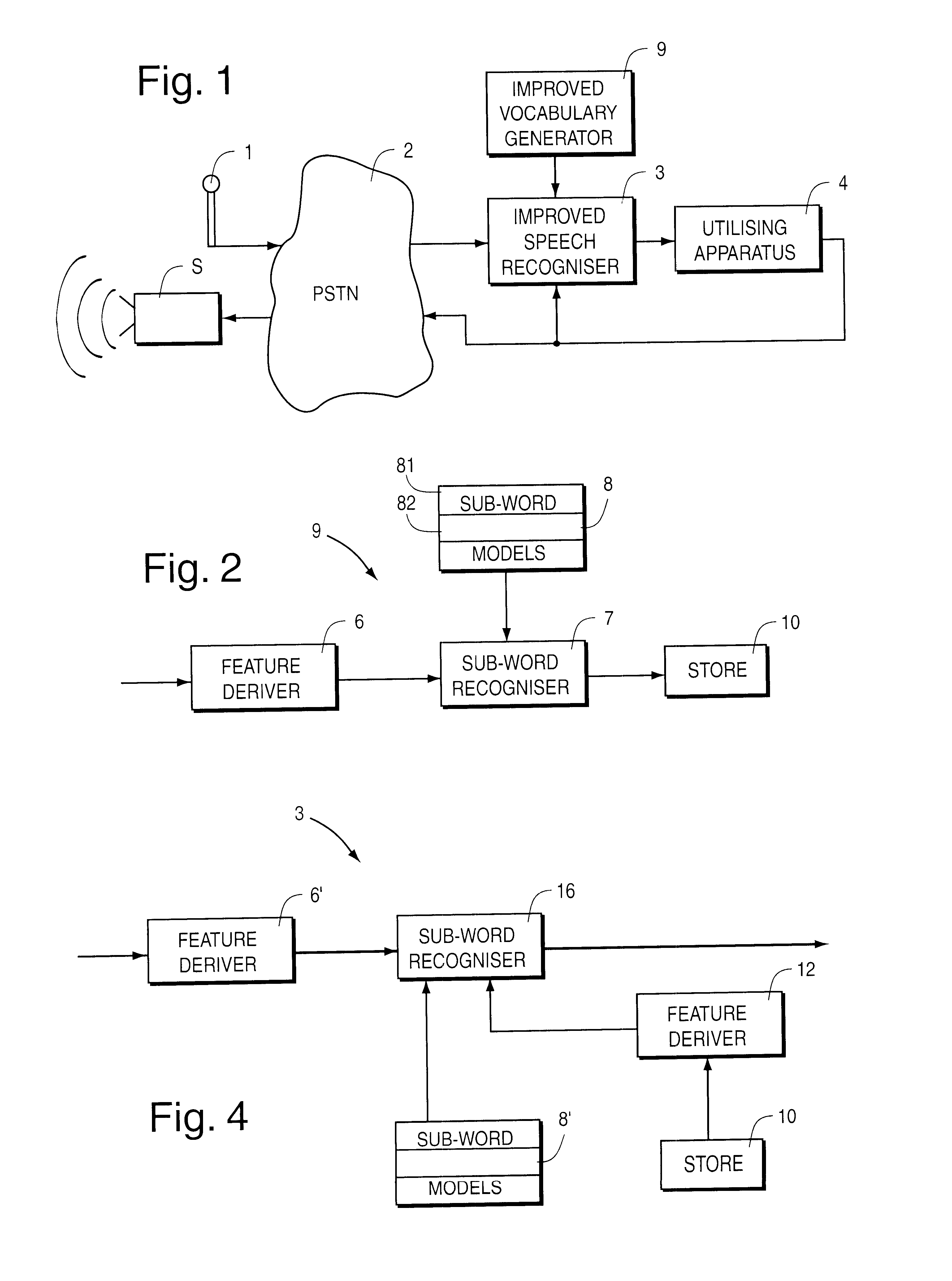System and method for generating a phonetic baseform for a word and using the generated baseform for speech recognition
a phonetic baseform and word technology, applied in the field of speech processing, can solve the problems of system not being suitable for other users, unfavorable for man and machine to achieve full fluency, and limited understanding of how human beings understand speech
- Summary
- Abstract
- Description
- Claims
- Application Information
AI Technical Summary
Benefits of technology
Problems solved by technology
Method used
Image
Examples
Embodiment Construction
Referring to FIG. 1, a telecommunications system including speech recognition generally comprises a microphone 1 (typically forming part of a telephone handset), a telecommunications network 2 (typically a public switched telecommunications network (PSTN)), a speech recogniser 3, connected to receive a voice signal from the network 2, and a utilising apparatus 4 connected to the speech recogniser 3 and arranged to receive therefrom a voice recognition signal, indicating recognition or otherwise of a particular word or phrase, and to take action in response thereto. For example, the utilising apparatus 4 may be a remotely operated repertory dialling system in which a user does not dial the desired number but simply speaks the name of the person to be dialled.
In many cases, the utilising apparatus 4 will generate an audible response to the user, transmitted via the network 2 to a loudspeaker 5 typically forming part of the user's handset.
In operation, a user speaks into the microphone...
PUM
| Property | Measurement | Unit |
|---|---|---|
| flexibility | aaaaa | aaaaa |
| mel frequency cepstral coefficients | aaaaa | aaaaa |
Abstract
Description
Claims
Application Information
 Login to View More
Login to View More - R&D
- Intellectual Property
- Life Sciences
- Materials
- Tech Scout
- Unparalleled Data Quality
- Higher Quality Content
- 60% Fewer Hallucinations
Browse by: Latest US Patents, China's latest patents, Technical Efficacy Thesaurus, Application Domain, Technology Topic, Popular Technical Reports.
© 2025 PatSnap. All rights reserved.Legal|Privacy policy|Modern Slavery Act Transparency Statement|Sitemap|About US| Contact US: help@patsnap.com



